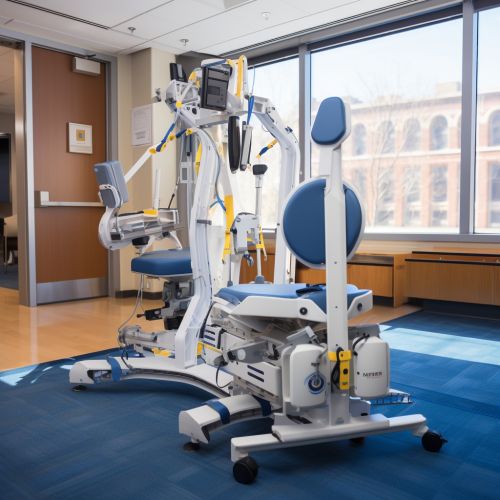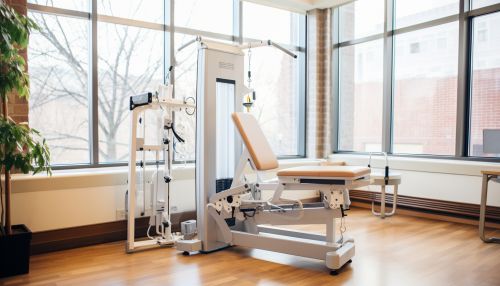Isokinetic exercise
Introduction
Isokinetic exercise is a type of strength training that involves the use of specialized machines to provide a constant speed, regardless of the amount of force exerted. This form of exercise is unique in that it can provide a maximum load to the muscles throughout the entire range of motion, making it an effective tool for both rehabilitation and athletic training. Strength training and rehabilitation are two fields where isokinetic exercise is commonly used.


Principles of Isokinetic Exercise
Isokinetic exercise is based on the principle of maintaining a constant speed while varying the resistance. This is achieved through the use of specialized exercise equipment that can adjust the resistance in response to the user's force output. The term "isokinetic" comes from the Greek words "iso", meaning equal, and "kinesis", meaning movement. Therefore, isokinetic exercise can be defined as exercise involving movement at a constant speed.
Benefits of Isokinetic Exercise
Isokinetic exercise offers several benefits over other forms of strength training. It allows for a high level of control over the speed and resistance of the exercise, which can be beneficial for individuals recovering from injury or those who are new to strength training. It also provides a safe and effective way to improve muscular strength and endurance, as well as joint flexibility and range of motion.
Isokinetic Exercise Equipment
Isokinetic exercise requires the use of specialized equipment that can maintain a constant speed while varying the resistance. These machines are typically found in physical therapy clinics and athletic training facilities. The most common types of isokinetic exercise equipment include the Cybex Norm, Biodex System 3, and the Humac Norm.
Isokinetic Exercise in Rehabilitation
In the field of rehabilitation, isokinetic exercise is often used to help individuals recover from injuries or surgeries. It can be particularly beneficial for rehabilitating the knee, shoulder, and other joints. The ability to control the speed and resistance of the exercise allows for a gradual increase in intensity, which can help to prevent re-injury.
Isokinetic Exercise in Athletic Training
In addition to its use in rehabilitation, isokinetic exercise is also commonly used in athletic training. It can be an effective tool for improving muscular strength and endurance, as well as joint flexibility and range of motion. Many athletes use isokinetic exercise as part of their training regimen to enhance performance and prevent injury.
